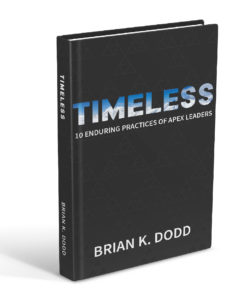While peacetime and wartime can be a state of being, it is also a state of mind. In his new book What You Do Is Who You Are: How To Create Your Business Culture, author Ben Horowitz states, “Most CEOs have personalities that are suited for one or the other.
Whether you lead a church, business, non-profit, or athletic organization, you are either a peacetime leader or a wartime leader. In general, peacetime leaders are kind, patient, understanding, gentle, kind, and collaborative. Think Truett Cathey. In general, wartime leaders are impatient, loud, abusive, intolerant, my way or the highway, and lovers of conflict. Think Steve Jobs.
In terms of Horowitz’s book, the concepts and lessons on culture-building are amazing. However, the language is absolutely awful. The people profiled drop F-bombs like the sky drops rain in the Spring. So be prepared if you make the purchase.
The following are 16 Differences Between A Peacetime Leader And A Wartime Leader adapted from Ben Horowitz’s book What You Do Is Who You Are: How To Create Your Business Culture.
- A peacetime leader knows that proper protocol leads to winning. A wartime leader violates protocol in order to win.
- A peacetime leader focuses on the big picture and empowers people to make detailed decisions. A wartime leader cares about the minutest details if it interferes with the prime directive.
- A peacetime leader builds scalable, high-volume recruiting machines. A wartime leader does that, but also builds HR organizations that execute layoffs.
- A peacetime leader spends time defining the culture. A wartime leader lets the war define the culture.
- A peacetime leader always has a contingency plan. A wartime leader knows sometimes you need luck.
- A peacetime leader knows what to do with a big advantage. A wartime leader is paranoid.
- A peacetime leader never uses profanity. A wartime leader uses profanity purposefully.
- A peacetime leader thinks of the competition as other ships in a big ocean they may never engage. A wartime leader thinks the competition is sneaking into their house and kidnapping their children.
- A peacetime leader aims to expand the market. A wartime leader aims to win the market.
- A peacetime leader strives to tolerate deviations from the plan when coupled with effort and creativity. A wartime leader is completely intolerant.
- A peacetime leader does not raise their voice. A wartime leader rarely speaks in a normal tone.
- A peacetime leader works to minimize conflict. A wartime leader heightens contradictions.
- A peacetime leader stiles for broad-based buy-in. A wartime leader neither indulges consensus-building nor tolerates disagreements.
- A peacetime leader has big, hairy audacious goals. A wartime leader is busy fighting the enemy.
- A peacetime leader trains their employees for satisfaction and career development. A wartime leader trains their employees to survive the battle with the enemy.
- A peacetime leader does not do business unless they can be #1 or #2 in the industry. A wartime leader is doing anything to survive.
So the question begs, are you a peacetime leader or a wartime leader?
Haven ́t you ever wanted to become the leader God created you to be? Well, Timeless: 10 Enduring Practices Of Apex Leaders is now available for purchase.
My book combines leadership lessons from biblical leaders like Jesus, Daniel, and Joseph, along with modern-day leaders like Bill Belichick, Tom Brady, Bill Gates, Nick Saban, Kobe Bryant, and multiple pastors.
You cannot read this book alone. You will find questions in each chapter that you can discuss within your circle of influence.
Order your book now and be a great leader for good causes! A special thanks goes to copywriter Al Nava, a fan of this site, for writing this blurb. If you are looking for a copywriter, Al can be reached at compellingcopyforyou@gmail.com.

